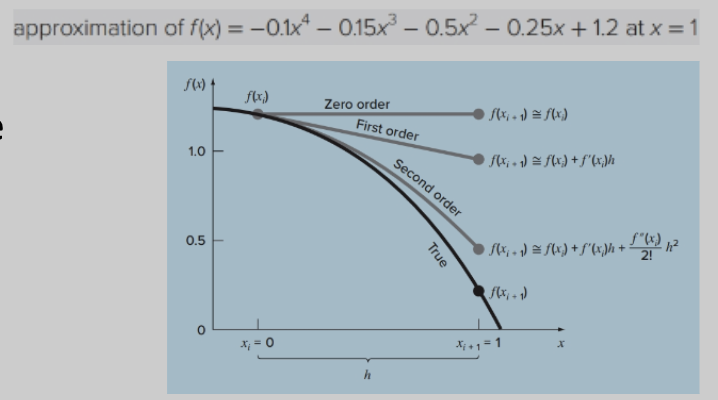Round-Off Errors
When numbers with limited significant digits are used to represent exact numbers.
Scientific notation:
where:
- = mantissa
- = base of number system being used
- = exponent Example:
Computer round-off errors:
- Overflow error – numbers are too large or too small to be represented
- Quantizing errors – irrational numbers cannot be entirely represented (e.g. )
- Error in interval between numbers (when increases as the number grows, the floating point representation can keep its significant digits, but the quantizing errors will be proportional to the magnitude of the number)
- Machine epsilon – ratio of to
- Relative approximate error due to rounding numbers
Truncation Errors
From use of approximation in place of exact mathematical procedure.

For example, using Can be expressed in terms of Taylor Series:
- If a function and its first derivatives are continuous on an interval of width containing , then the value of the function at is given by:
This relates the value of the function to .
So, we have:
Since we typically have , we have:
- and other higher-order terms
- Truncation error of order is referred to as “first-order”
- Truncation error is the difference between the true value of a function, and the value obtained from numerical approximation.